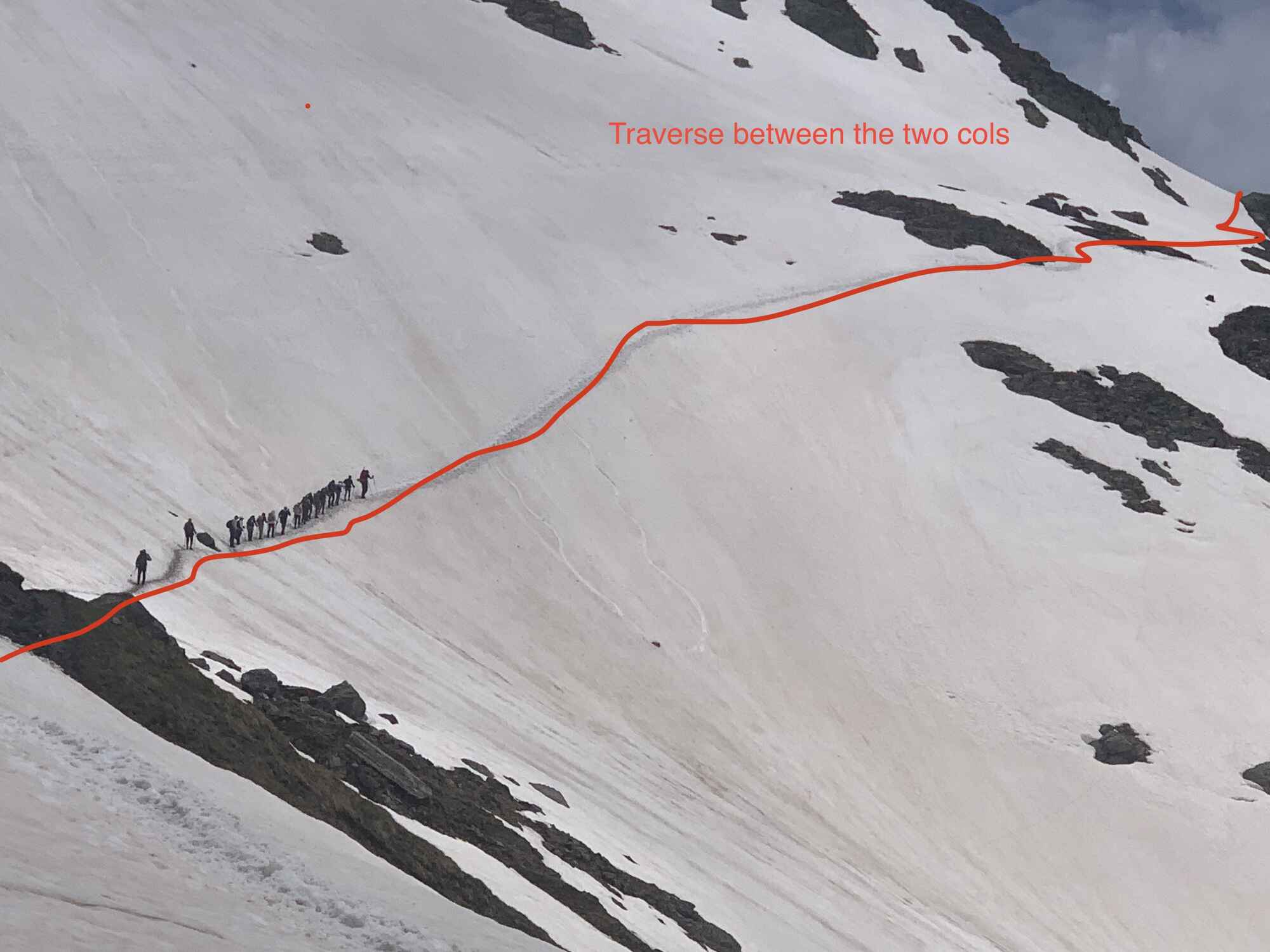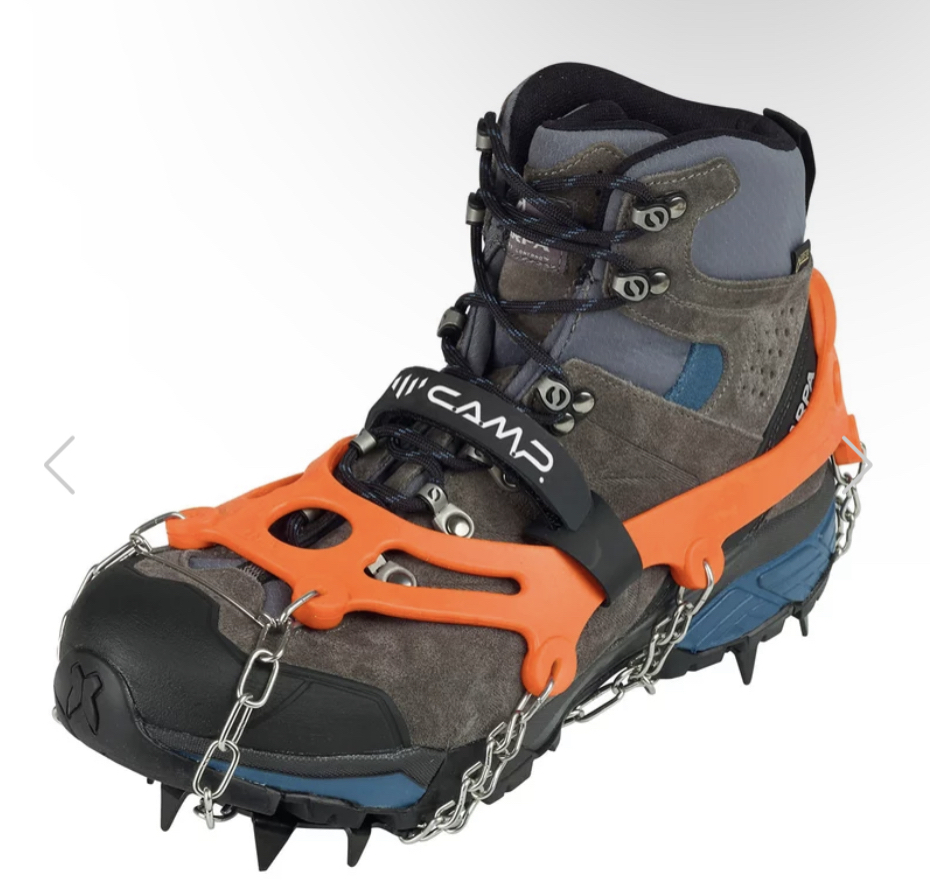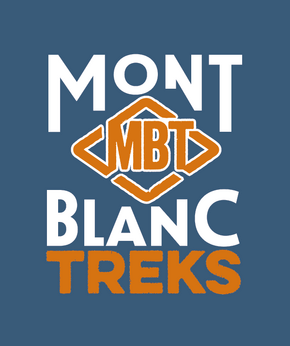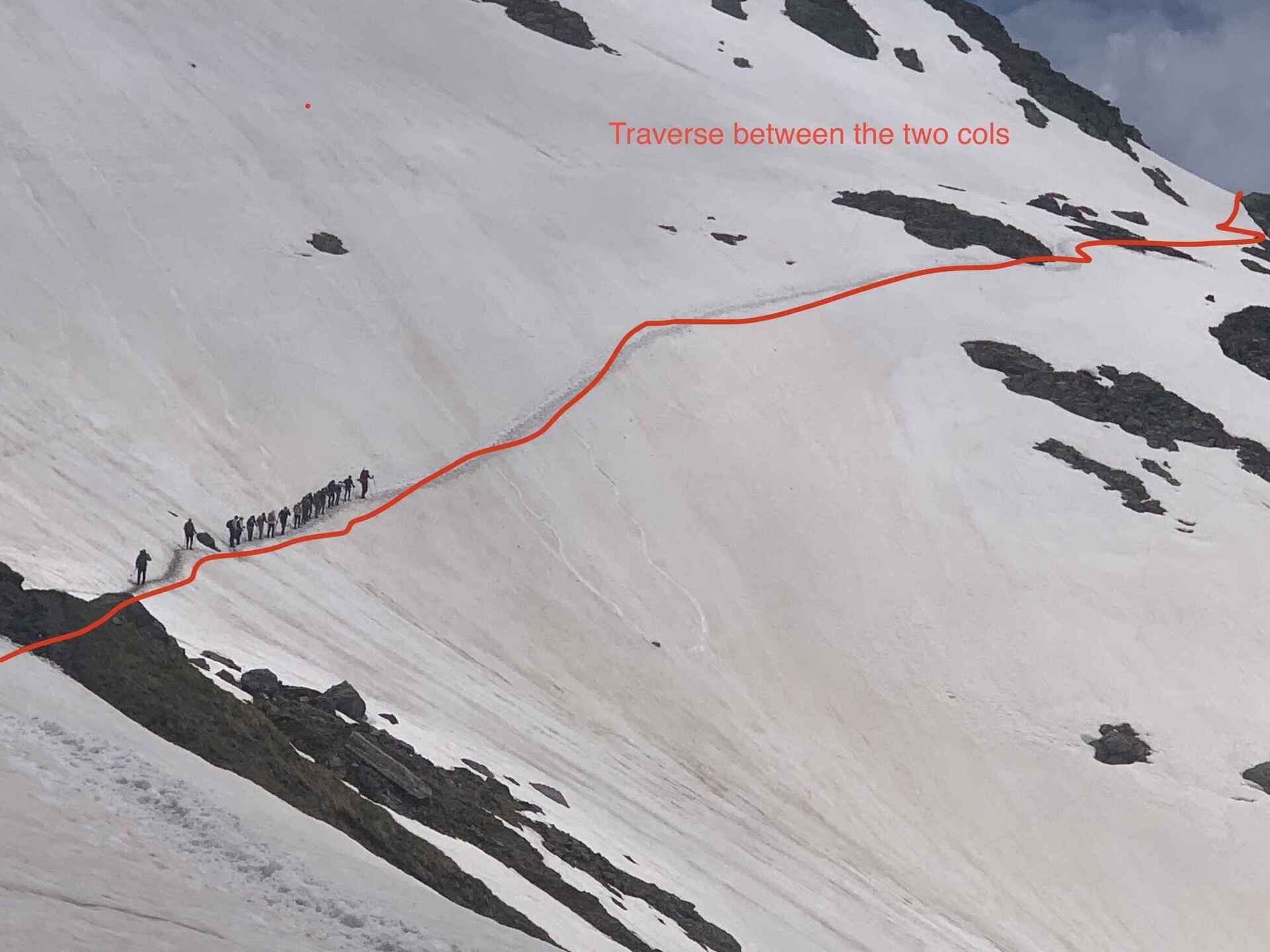Tour du Mont Blanc- Current Conditions
It is hard to believe the amount of snow that persists above 2000m when you are in the valley bottom, which is free of snow, lush and green. However this situation is very different away from the safety of the valley bottom the spring has continued to be cold and the snow persists on the high ground making passage slow, difficult and potentially dangerous. We have continued to monitor the conditions over the past few weeks and have made a recce of each section of the route as this year's residual snow is exceptional and alarming.
Over the past few weeks, we have seen the return of cooler weather with temperatures in the valley of 6 degrees. Temperatures are set to rise over the next week to more seasonal norms. We envisage the snow being on the route well into July.
The main problem areas:
Chamonix to Les Houches via the Col du Brevent
Contamines to Chapieux & Ville des Glaciers via the Col du Bonhomme (2443m) & the Col de la Croix Bonhomme (2483m) & Col des Fours (2665m) if going to Ville des Glaciers.
Chapieux & Ville des Glaciers to Courmayeur via the Col de Seigne (2516m) & Vielle d’Arp and the Mont Fauvre spur.
Refuge Bonatti to La Fouly via the Grand Col Ferret (2537m)
Champex to Trient via the Fenetre d’Arpette (2665m)


For your own safety please take notice of our advice where the route is not advisable and change your route accordingly.
The itinerary in brief
Day 1: Chamonix to Les Houches, do not attempt the high route via the Col de Brevent, there is a lot of snow, and the ladder section is banked out with snow and the steep ground could be potentially dangerous or fatal if you were to slip or fall. Do not take the lift to Plan Praz, take a lower route from Chamonix through the trees. See your map for options.
Day 2: Les Houches to Contamines: The route over the Col du Tricot is passable. Route via Bionnassay & Chapel no problems.
Day 3: Contamines to Chapieux or Ville des Glaciers: A great deal of snow above 2000m, this section is not advisable without the correct equipment (see below). As you ascend above 2000m you will be on snow for many hours, the snow is deep 3m in places. Great care needs to be taken from the Chalets des Jovets to the descent into Chapieux. Do not attempt the Col des Fours, this is extremely steep at the top with the snow a slip or fall could be serious or fatal. If staying at the Refuge Mottets descend to Chapieux and walk up the road to Ville des Glaciers and on to the refuge.
Day 4: Chapieux or Ville des Glaciers to Courmayeur: A great deal of snow above 2000m, this section is not advisable without the correct equipment (see below). Great care needs to be taken on the snow traverses. Do not attempt the Vielle d’Arp as this has some seriously steep ground that is banked out with snow when traversing round from the Mont Fauvre spur a slip or fall at this point could be serious. Instead from Lac Combal descend to La Visaille and walk or take the navette into Courmayeur.
Day 5: Courmayeur to Refuge Bonatti: ok if a lower route is taken. Do not take the high options as outlined in the guidebook.
Day 6: Refuge Bonatti to La Fouly: Contamines to Chapieux or Ville des Glaciers: A great deal of snow above 2000m, this section is not advisable without the correct equipment (see below). From Arnuva walk up the 4x4 track to the refuge Elena, do not attempt to take the TMB route up the gully, the bridge over the gully has not been re-instated as yet and crossing the snow bridge could be dangerous. Great care needs to be taken when ascending to the Grand Col Ferret and descending on the other side as there is still a massive amount of snow.
Day 7: La Fouly to Champex: No problems, route as normal.
Day 8: Champex to Trient: The Bovine route is free of snow and is fine. Do not attempt the variant via Fenetre d’Arpette, as with the Col des Fours the route is steep on both sides of the Col and when banked out with snow, a slip of fall here could be serious or fatal.
Day 9: Trient to Argentiere: Take the route direct from Trient to the Col du Blame, these is a great deal of snow on the north easterly side of the Col so care needs to be taken here, the westerly side of the col is free of snow. The rest of the route is passable.
Day 10: Argentiere to Chamonix: The Aiguille Rouges nature reserve still has a lot of snow; Lac Blanc is completely covered with snow and remains frozen. Therefore, we advise to remain on the lower balcony to Flegere and do not ascend to Lac Cheserys and Lac Blanc, the route from Flegere to Brevent has no problems.
Essential kit:
All kit outlined on our kit list not forgetting good waterproof boots, gloves, warm hat, warm layers, waterproof outer layers, sun cream & sunglasses to protect against snow glare.
Microspikes & walking poles x 2 per person to aid balance.
Gaiters to keep you dry when walking through snow.

Important to remember
Walking on snow can be very tiring and time consuming, you will need a good level of fitness in order to be able to cope with this additional challenge. You will also need to allow more time each day to get to your destination.
Snow and bad weather also make navigation difficult as you cannot see the designated path and route markets and signage will be covered with snow. Good navigational skills are essential, the ability to read a map, use a compass and altimeter are a pre-requisite of this self-guided trek.
Due to the current condition’s information given on the route cards may be inappropriate. You need good mountain sense and the ability to make your own decisions, from the information given and your own experience it is your responsibility to select alternative routes.
Snow on high ground this can make the route difficult and dangerous in places. A great deal of care needs to be taken when moving on Neve (old snow), depending on the weather this can be frozen solid or slush and without crampons can be impossible to cross without slipping. It is essential that you make a risk assessment before crossing snow, look below and ask yourself if you slipped how far would you slide & fall? Could a slip or fall cause injury? If in doubt retreat back and descend.
Next blog will be posted on Saturday 15th June with further information and photos.




